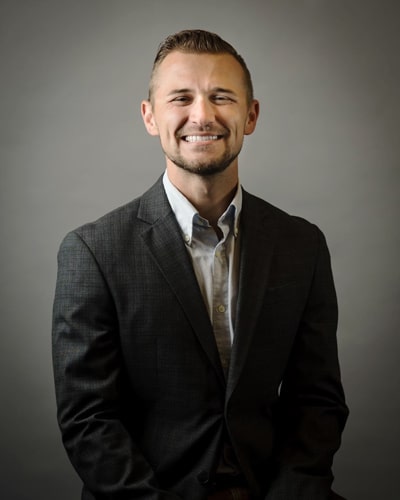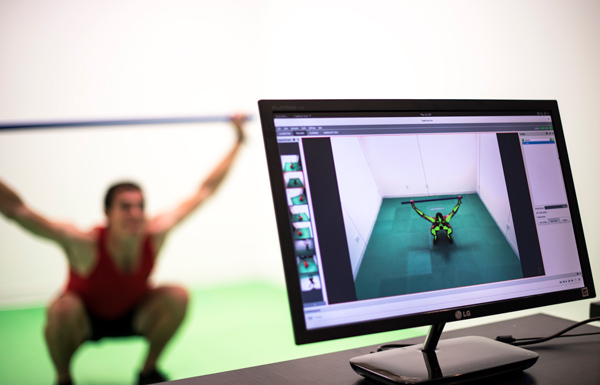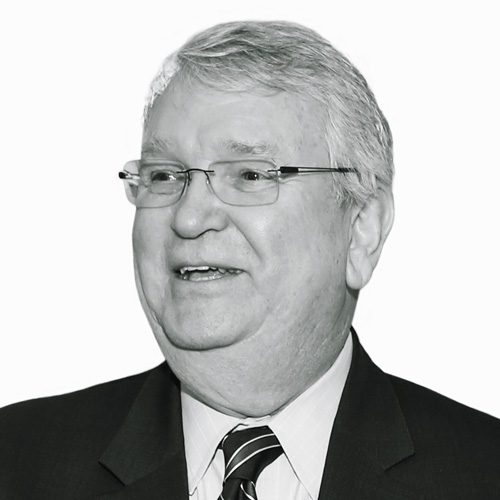Five years ago, Joel Hungate was a medical device consultant and a biomedical engineer with a desire to make a difference in orthopedics and, more ambitiously, shift the paradigm in musculoskeletal health assessment. As it turns out, everything he was looking for was right next door to his office.
At the Dynamic Athletic Research Institute (DARI), a group of researchers, led by brothers Patrick and Ryan Moodie, was refining motion capture technology not unlike the kind that’s used in creating video games and animated films. The goal at DARI, however, was to figure out how they could use this technology to achieve objectivity in the realm of sports performance, namely in treating and preventing joint and muscular injuries.
On a whim, Hungate stopped into the DARI offices to check out what the neighboring researchers were doing. Impressed by the potential of this technology, Hungate kept on coming back. He saw an untapped opportunity in DARI’s technology to bring an objective eye to healthcare, where motion health is typically treated and tracked via subjective and unrepeatable “eyeball tests.” Hungate believed that the technology had the potential to predict and prevent pathologies on a grander, population-level scale, thus allowing patients to engage in their motion health like never before.

“I thought to myself, ‘When this turns the corner and reaches a speed and scale that we can use in clinical settings, where we can get a scan and see objective data immediately, where we can action it in a patient population, that’s when we need to start talking about taking this to the next level in healthcare,” Hungate says.
When that day came, Hungate took action. “I couldn’t stop my mind from trying to work through all the different ways we could apply the technology,” he says. Fueled by enthusiasm, he put together a presentation and proposal before ever working in an official capacity for the company. He then took the proposal to potential healthcare customers in an attempt to plant seeds and gauge interest in the technology. It wasn’t long until DARI appointed him its vice president of orthopedics programs.
“Ever since, I’ve been dreaming up new ways for us to use this technology in healthcare to make such a difference in the lives of patients and clinicians by treating musculoskeletal health objectively,” he says.
Here’s how it works: A patient steps into the system—which has no sensors, markers, force plates, or lengthy calibration—and strikes a pose so DARI can overlay a “digital skeleton” on the patient’s body. From there, the technology calculates all kinetics and kinematics during any movement in three dimensions. It can also perform a full-body scan that involves a nineteen- or twenty-movement pattern or target individual problem areas with single motions. Afterwards, an online portal, dubbed the DARI Vault, calculates the biomechanics, applies algorithms and reporting constructs, and generates comprehensive reports and DARI “scores” based on motion health—all in roughly five minutes or less. An added bonus is that patients can wear whatever they want during the process.
Using DARI’s technology, clinicians and physical therapists can objectively identify dysfunction and imbalances and assess musculoskeletal risk, thus improving their ability to treat issues before they manifest as costly complications.
Hungate aligns DARI with the movement toward personalized medicine and prevention in healthcare. “When we scan someone, we capture a personal motion signature,” he says. “From that point on, we can see the objective manifestations of our medical interventions and achieve a better, more effective way of identifying care paths and matching people to whatever therapies meet their needs. We can start to get ahead of these problems before they become a burden on the system.”

There’s been ample interest and a number of positive testimonials about the real-world benefits of DARI’s technology. The Carlton Blues, an Australian rules football team in Melbourne, experienced their first season without an ACL injury in one hundred years after using DARI’s technology. Likewise, UC Health and Steadman-Hawkins Denver Clinic are currently using the technology to fundamentally change the way they deliver orthopedic and PT care. Rolling out the technology worldwide, however, will take time. “It’s a paradigm shift,” Hungate says. “We’re talking about opening up the floodgates and providing data that nobody had access to before. You have to build the onus and the use case for applying that data. You have to show the value.”
Luckily, DARI’s value is continuously growing. DARI’s parent company, Scientific Analytics, is consolidating the rapidly evolving technology. On a grander scale, Hungate says DARI will soon be able to leverage its database to use predictive analytics to identify biomarkers that predispose patients to specific outcomes or specific pathologies. At approximately three hundred thousand human motion files, he says it’s the largest database of its kind in the world.
“It’s such a new idea to treat motion this way,” Hungate says. “We want DARI to be a new way for people to think about their health. Movement is medicine, and if motion really is the next vital sign, then we are the ‘blood pressure cuff’ for human motion.”
Someday soon, Hungate believes, everyone will know their DARI scores—and we’ll be better off for it.
A Message From Cradlepoint, Inc.:
Network mobility is the biggest opportunity for healthcare in today’s technology-driven market. With the competitiveness of the new healthcare landscape, innovative healthcare applications are now a necessity; these include mobile clinics, bringing healthcare to the patients for home care, ambulatory applications, and traveling doctors that bring their own network (BYON) to clinics to provide care.
The growth of 4G LTE networks now lets medical professionals sever traditional ties to the office and use high-speed, reliable connectivity to enable key wellness programs and bring advanced care to patients anywhere and everywhere.
Learn more at www.cradlepoint.com/healthcare.

